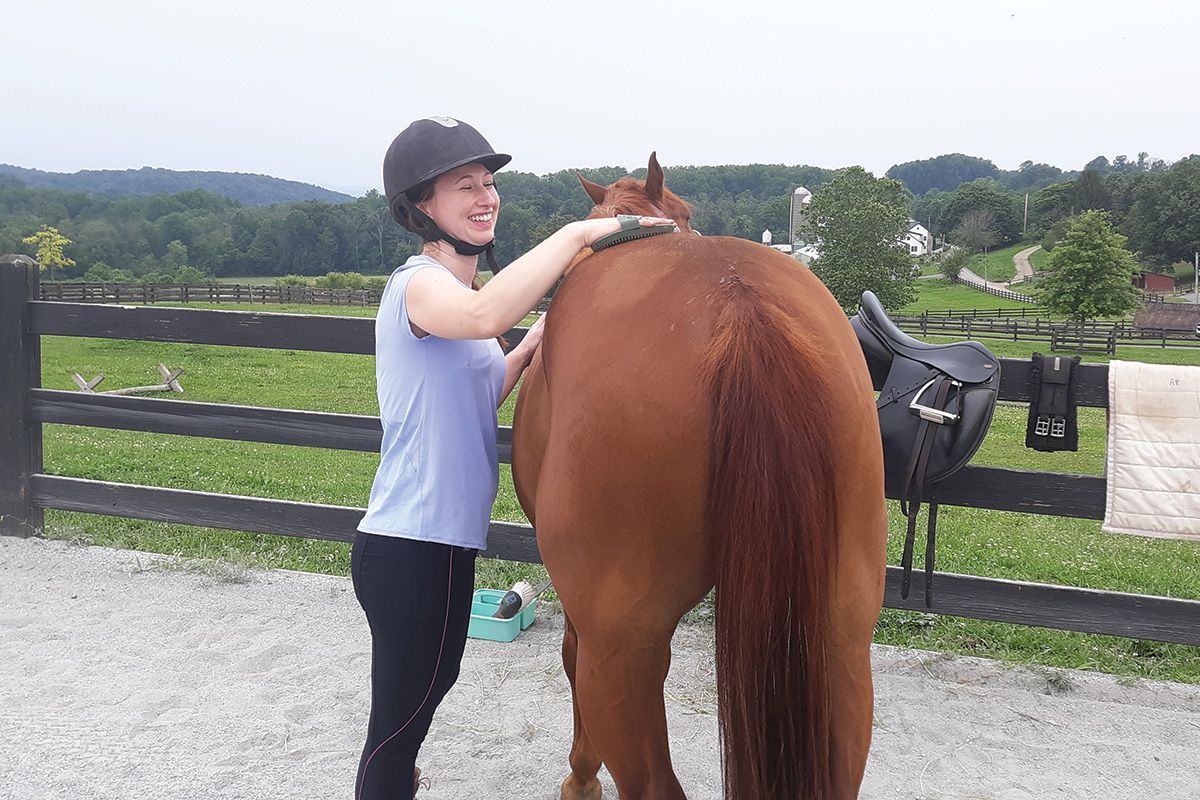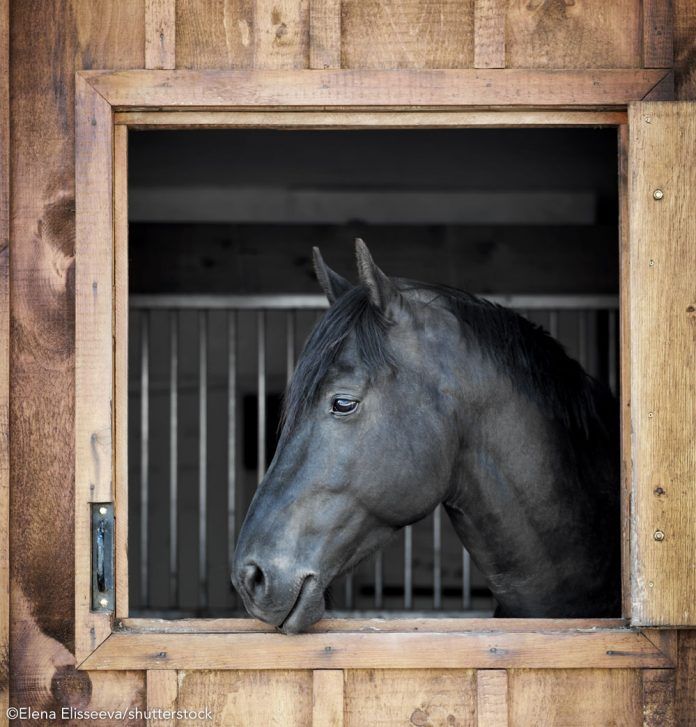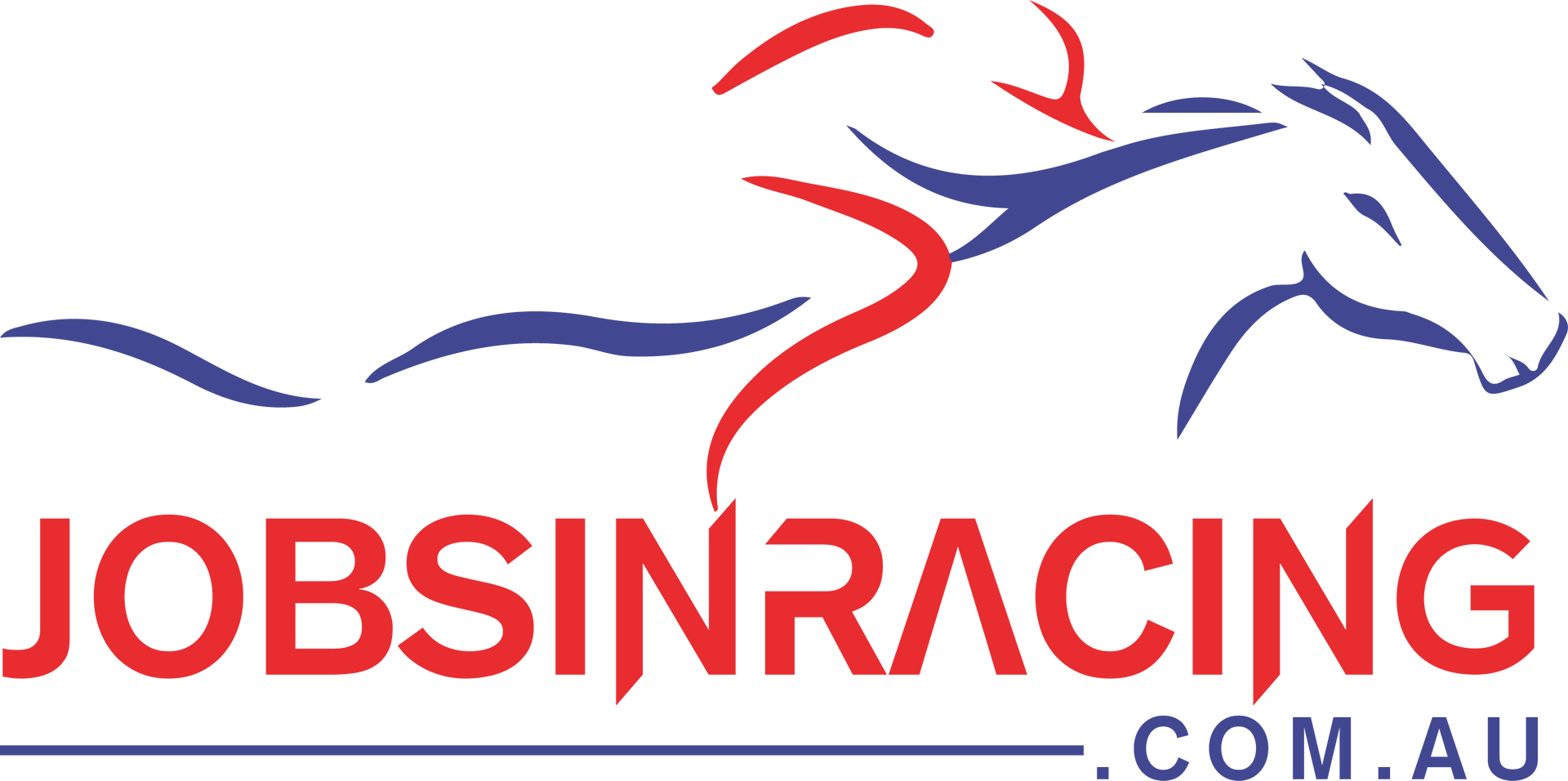Horse Racing Terminology
Across the board: A bet on one horse to win, place, and show.
Allowance or Allowance Race: A non-claiming event in which the racing secretary conditions weight allowances based on previous purse earnings and/or types of victories.
Also Eligible or "AE": Horses entered into the field that will not run unless other horses are scratched.
Apprentice Jockey: A student jockey that will receive a weight allowance of varying degrees depending on his or her experience.
Backstretch: The straight part of the track opposite the finish line or the stable area.
Baby Race: A race for two year old horses, especially early in the season.
Blinkers: Eye equipment that limits a horse’s vision; generally used to help the horse concentrate on running and to reduce distraction.
Break Maiden: When a horse or rider wins for the first time.
Breeze: A term generally used to describe a workout in which a horse is easily running under a hold without encouragement from the rider.
Bridge jumper: A bettor that places large bets in the Place or Show pools on odds-on favorites.
Broodmare: A female thoroughbred that is used for breeding.
Broodmare dam: A mare that produces female progeny that are used for breeding.
Broodmare sire: A male horse that produces female progeny that are used for breeding.
Bug Boy: An apprentice jockey
Bull Ring: A small track where the oval is generally less than one mile and, thus, has very tight turns.
Buy the race: Using every single horse running in a specific race in an exotic wager. For example, if a player buys a Daily Double ticket for the 1st and 2nd race that is 8 with ALL, the bettor will have "bought" the second race.
Carryover: Usually refers to money in the parimutuel pool for a Pick Six wager that is left over after a sequence fails to have a single player select all of the winners. For example, if there are no winning tickets for a Pick Six on a Friday at a track, the money left in the pool (minus the track take) is a considered a carryover and will be added to the pool for Saturday's Pick Six. Successive carryovers can lead to very large Pick Six pools.
Claiming Race: A race where each horse in the field has a price and can be purchased by any person that makes a valid claim prior to the running of the race.
Clocker: A person that times and/or rates workouts.
Clubhouse Turn: The first turn of races that begin on the frontstretch/homestretch.
Colt: A male horse.
Condition: To train a horse
Conditions: The circumstances under which a race will be run, such as: surface, distance, purse, and eligibilities.
Consolation:A payout, typically in a Pick Six, where players without a full winning ticket still receive money. For example, a player that hits 5-of-6 races in the Pick 6 will typically collect a small consolation payout. Consolations are generally much smaller than the full payout.
Daily Double: A wager in which the player attempts to pick the winner of two sequential races with a single ticket.
Dam: The mother of a horse.
Dark: A day in which a track is not featuring live racing.
Derby: A stakes race for three year old horses.
Distance of ground: A route race or a race run around two turns.
Dog: A cone or other obstruction placed a specified distance from the rail of the turf course to keep horses from damaging that portion of the grass.
Eased: A horse that is pulled up or stopped prior to finishing the race
Exacta: A bet in which the player attempts to pick the 1st and 2nd place horse on one ticket.
Fast Track: Rating of a dirt track that is dry and hard.
Filly: A female horse
Fire Sale: A drastic reduction in the claiming price of a horse.
Foal: A newborn horse.
Form: The current condition of a horse; may also refer to The Daily Racing Form publication.
Fractions: Clocking at quarter-mile increments in either a race or a workout.
Front Runner: A horse that wants to run on or near the lead.
Furlong: One eighth of a mile.
Gelding: A castrated male horse.
Going: The condition of the racing surface. Dirt courses are generally rated Fast, Good, Muddy, or Sloppy. Turf courses are generally rated Firm, Good, Yielding, Soft, or Heavy.
Graded Race: A stakes race that is assigned a grade (I, II, or III) by the American Graded Stakes Committee based on the relative strength of the race as compared to all other races. This is the highest form of racing.
Half sister: A female horse out of the same dam as the other horse but with a different sire. Horses with the same sire but different dams are not considered half sisters or brothers.
Handicap: A race in which the racing secretary assigns weights designed to equalize the winning chances of the entrants; or to study horses’ records in order to determine the chances of each to win the race.
Handily: A fairly strenuous workout where the jockey urges the horse on but does not use the whip.
Handle: Total sum bet on a race or during an entire day.
Hand ride: A jockey that is urging a horse on by "scrubbing" his hand up and down its neck. A horse under only a hand ride was not whipped by the jockey.
Heavy Track: A grass racing surface that has received an extremely large amount of water and is an almost bog-like condition.
Horse: Technically, a male horse five years old or greater is a "horse". A male horse under five years of age is technically a "colt".
In hand: A horse running under restraint.
Inquiry: An official investigation by the stewards of the running of the race to determine whether a foul was committed by a horse or jockey.
In the money: To finish in the top four; this generally entitles the owner to a share of the purse. In betting terms "in the money" means to finish in the top three.
Irons: Stirrups
Jockey agent: An individual that obtains rides for a jockey.
Juvenile: A two year old horse.
Look of Eagles: A horse that has a confident look. John Henry had the Look of Eagles.
Lug In: A horse that bears (drifts towards the rail) in during the stretch run; usually the sign of a tired horse.
Maiden: A horse that has never won a race; or a race for horses that have never won a race.
Marathon: A race longer than 1 ¼ miles long.
Mare: A female horse aged five or older.
Middle distance: A race longer than seven furlongs but shorter than 1 1/8 miles.
Miler: A horse that prefers to race at or near a mile in distance.
Minus Pool: When enough money is bet on one horse that the pool is insufficient, after the track take, to pay the holders of the winning ticket the legal minimum odds. In this situation, the track is required to make up the difference to ensure that the bettors are paid the full amount.
Morning line odds: The odds set by the track prior to the opening of the pools.
Muddy Track: A dirt track that is soft, wet and holding.
Oaks: A stakes race for three year old fillies.
Objections: A claim of foul by a jockey following the race.
Odds: The chances of a horse to win a particular race based on the pari-mutuel wagering of the general public. The payouts for a $2 bet with corresponding odds are listed below: (see list at page, link below)
Odds Board: The tote board, usually found in the infield.
Off the board: A horse that fails to finish in the money.
Off the pace: A horse that is lagging back in the early stages of the race.
Off-track: A racing surface that is anything other than Fast (Dirt) or Firm (Turf/Grass).
Optional Claimer: A race where the horses in the field may or may not be entered for a claiming price.
Overlay: A horse whose odds are higher than its actual chance of winning, as determined by the player. For example, if a player determines that horse A’s odds are 4/1 that he will win, but the current odds at the track offer the horse at 10/1, that horse would be considered an "overlay". Overlays are good, underlays are bad.
Pace: The speed of the leaders at each stage of the race.
Parimutuels: French system of wagering where winning bettors get all the money wagered by the losers, after a deduction of a percentage by the track (Take Out).
Pick 3 (or 4, 5, 6, etc.): An exotic wager which requires the player to pick the winner in successive races.
Post: Starting gate.
Quarter crack: An injury to the hoof of a horse.
Quarter pole: Post on the infield rail that indicates two furlongs to the finish line.
Rank: A horse that refuses to be rated early on in the race.
Rate: To restrain a horse early on in the race in order to conserve energy for the later stages.
Route: Generally a race that is run around two turns.
School: To train a horse, generally in the starting gate or the paddock.
Scratch: To withdraw a horse from a race.
Shadow roll: A roll of cloth placed across a horse's nose in order to block its vision of the ground and prevent it from jumping shadows.
Shake up: Urging by the jockey, either with his hands or the whip, to make the horse run faster.
Shipper: A horse that has traveled from one track to another to run in a race.
Shut out: When a player fails to make his bet at the window prior to the gate opening.
Sloppy track: A track that is wet, covered with puddles, but not yet "muddy".
Spit the bit: When a tired horse stops running hard.
Sprint: A short race, seven furlongs or less.
Stewards: Three person panel that determines whether or not any rules violations occurred during the race.
Superfecta: A wager in which the player attempts to select the order of the first four finishers in a race. Due to the difficulty of this wager, a winning superfecta wager generally pays out at high odds.
Tag: Claiming price. A horse entered for a "tag" is entered in a claiming race.
Track Take: Money deducted from each pool for track revenue and taxes.
Trifecta: A wager in which the player selects the first three horses in a race in order.
Trip: The course followed by a horse and rider during the running of a race and describes the "trouble" encountered. A horse that had a "good trip" did not encounter any unusual difficulty. A "bad trip" might involve racing wide, or being boxed in by other horses.
Turf course: A grass covered course.
Under wraps: A horse in which the rider is holding it back and intentionally keeping it from running at top speed.
Washed out: A nervous horse that is sweating.
Source: https://www.anddownthestretchtheycome.com/pages/horse-racing-terminology


